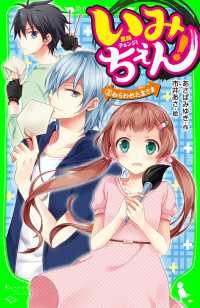Full Description
Policy recommendations and strategies to support teachers in addressing the violent past.
Education plays a vital role in fostering reconciliation and teaching peace in conflict-affected societies. In particular, teaching about the violent past from multiple perspectives helps replace fear and hatred with mutual understanding. While conflict-history education has been explored across sub-Saharan Africa and beyond, curricular reforms often overlook teachers—despite their key role in achieving success.
Building on insights from education sciences, sociology, political sciences, memory studies and social psychology, this book introduces a novel and interdisciplinary framework to analyse secondary school teachers' engagement with conflict-history education, using both qualitative and quantitative methods. It focuses on three distinct locations—Kenya, Côte d'Ivoire, and the Democratic Republic of Congo—that differ in the intensity of violence experienced and the time elapsed since conflict ended.
This practice-oriented book aims at identifying teachers' needs to feel confident and competent in driving reconciliation in their classrooms and provides actionable policy recommendations and teaching strategies to support them in this essential role.
Contents
Preface
List of Abbreviations
Introduction
I.1. Research gaps and objectives
I.2. Case study contexts
I.3. Methodology
I.4. Outline of this book
Part 1. Theory & Concepts
Chapter 1. Reconciliation, memory and (peace) education
1.1. Conflict narratives
1.2. Challenging conflict narratives through transitional justice
1.3. Education as a subject & instrument of transitional justice
1.4. Direct peace education
1.5. Sociological time & societal 'ripeness'
1.6. Alternatives to direct peace education
1.7. Theory of change of direct peace education
Chapter 2. The risk-taking continuum 2.0
2.1. Curricular-instructional gatekeeping
2.2. The risk-taking continuum
2.3. Limitations of the risk-taking continuum
2.4. Alternative frameworks
2.5. Towards a risk-taking continuum 2.0: the conflict-history education framework
2.6. Using the conflict-history education framework
Part 2. Empirical evidence
Chapter 3. Teaching about ethnic tensions in Kenya
3.1. Ethnic tensions and violence in Kenya
3.2. Education, conflict & peace
3.2.1. Kenya's education system
3.2.2. Education & conflict
3.2.3. Education & peace
3.3. Survey data
3.4. Support for (in)direct peace education
3.4.1. Support for multicultural education
3.4.2. Support for direct peace education
3.5. (Dis)comfort
3.6. (In)competence: Stereotyping and ethnic favouritism in the classroom
3.6.1. Stereotyping in the classroom
3.6.2. Ethnic favouritism in the classroom
3.7. Situating Kenyan teachers within the framework of conflict-history education
Chapter 4. Teaching about the violent past in Côte d'Ivoire
4.1. Conflict dynamics
4.2. Education, conflict & peace
4.2.1. Côte d'Ivoire's educational system
4.2.2. Education & conflict
4.2.3. Education & peace
4.3. Survey data
4.4. Support for (in)direct peace education
4.4.1. Support for indirect peace education
4.4.2. Support for direct peace education
4.5. (Dis)comfort
4.6. (In)competence
4.6.1. Focus on competing narratives of conflict
4.6.2. Support for teacher training
4.7. Situating Ivorian teachers within the framework of conflict-history education
Chapter 5. Teaching about ongoing violence in the eastern Democratic Republic of Congo
5.1. Conflict dynamics
5.2. Education, conflict & peace
5.2.1. The Congolese education system
5.2.2. Education & conflict
5.2.3. Education & peace
5.3. Survey data
5.4. Support for (in)direct peace education
5.4.1. Support for indirect peace education
5.4.2. Support for direct peace education
5.5. (Dis)comfort
5.6. (In)competence
5.7. Uprooted
5.7.1. Background on 'Uprooted'
5.7.2. Fostering critical design experts through 'Uprooted'
5.8. Situating Congolese teachers within the framework of conflict-history education
Part 3. Conclusions & Policy recommendations
Chapter 6. Main findings and conclusions
6.1. Situating teachers in terms of their support for direct peace education
6.2. Explaining differences
6.3. Teachers' professional development needs
6.4. Limitations & future research directions
Chapter 7. Promoting critical design experts? Policy recommendations
7.1. Reflections from the field
7.1.1. Kenya: Mary Wanjiru Kang'ethe
7.1.2. Côte d'Ivoire: Louis-Gervais Adomon Anoma
7.2. Policy recommendations
7.3. Teaching strategies
7.3.1. Silent conversations
7.3.2. Exploring the unknown
7.3.3. Forum theatre
Appendix
Notes
References
Index








